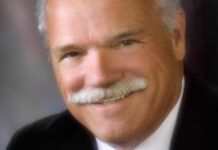Many people view doctors as experts in the science of medicine, but there is an art to the practice as well. Underlying this art are the therapeutic, human-to-human relationships that doctors build with their patients.
On March 30, Mee Memorial Healthcare System takes the time to celebrate National Doctors’ Day, an annual observance that recognizes the contributions of physicians to individual lives and communities.
Both the science and art of medicine are on display daily in our community, especially during these most trying times. While we honor the dedication and diligence of our fine doctors throughout MMHS, we want to extend our heartfelt respect and gratitude to all advanced practice practitioners, nurses, frontline responders and every single supporting staff member who have bravely stepped forward to care for our community during the pandemic. We have seen profound examples of these modern-day heroes treating patients with compassion, skill and selflessness.
It is certain that our fine doctors do not mind sharing the limelight on this important day. Teamwork is essential when striving for a community general health and wellbeing, especially in our close-knit, rural corner of Monterey County.
Because the rural healthcare landscape is so complex, our medical staff has a huge job in diagnosing and treating patients to keep them in the best of health.
Approximately 1 in 5 people in our country live in rural areas. There are many different reasons why we choose this lifestyle, including a lower cost of living and a slower pace of life.
Yet, according to the National Rural Health Association, there are inherent challenges to living in rural areas, especially when it comes to taking care of our health. Compared to urban areas, rural communities tend to have:
- Higher poverty rates
- Higher percentage of older adults who are more likely to have chronic health problems
- Larger percentages of uninsured and underinsured residents
- Higher rates of chronic health problems such as high blood pressure and diabetes
- More exposure to environmental hazards, such as chemicals used for farming
- Greater transportation difficulties reaching healthcare providers
- Higher incidence of tobacco use
- Lack of access to high-speed internet, a hindrance to accessing information.
The challenges faced by healthcare providers and patients in rural areas are vastly different than those in urban areas. Consider the following:
- More than 50 percent of vehicle crash-related fatalities happen in rural areas
- In rural areas there is an additional 22 percent risk of injury-related death.
- Rural areas have more frequent occurrences of diabetes and coronary heart disease than non-rural areas.
- Rural residents are less likely to be insured for mental health services, and less likely to recognize the illness.
- The number of physicians per 10,000 residents is much lower in rural areas than urban zones (13.1 to 31.2).
Such inequities evolved over many years. The history of governmental public health in America dates back to the late 1700s, but much of the focus centered on urban areas.
The agencies that focused on public health — municipal health departments, state boards of health etc. — predominantly focused on urban health issues due to diseases spread through improper sanitation and close living quarters.
“Clean” country living was thought to be immune from these concerns and urban areas did not receive the same level of public health focus. It was not until the late 1890s that the focus began to shift. In 1899, Pennsylvania Gov. Daniel H. Hastings reported to the state legislature that it was fiction to assume “that the country districts are naturally so healthy that there is no need for laws to prevent disease.”
Sadly, rural areas have been playing catch-up ever since. As the only healthcare system within 40 miles, Mee Memorial Healthcare System works diligently to help remove or overcome barriers to quality healthcare.
I cannot understate the dedication and commitment of the staff, providers, nurses and physicians to ensure our community has access to healthcare, and the compassion in which they deliver that care to their patients and families.
Through connectivity and collaboration, MMHS is large enough to serve our community’s health needs, yet small enough to care about individual patients and their unique concerns. When it comes to the “experience of care,” I would put our entire team’s abilities up against any in the country.
We are also fortunate to have in our corner the Mee Memorial Hospital Foundation, which is dedicated to improving access to care in South County by funding important projects.
The foundation’s mission is to adequately “equip, modernize, update and make aesthetically pleasant the hospital facilities.” Over the past 50 years, the foundation has raised millions of dollars for the betterment of the hospital, from fetal monitors and dialysis chairs to floor polishers.
The foundation’s effort is yet another example of profound teamwork and commitment that binds our rural community. It’s part of the art of medicine that we honor and cherish on March 30, and every other day.














